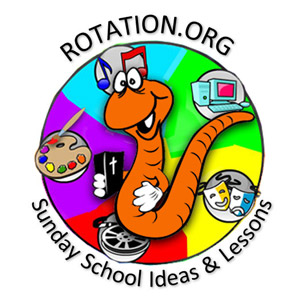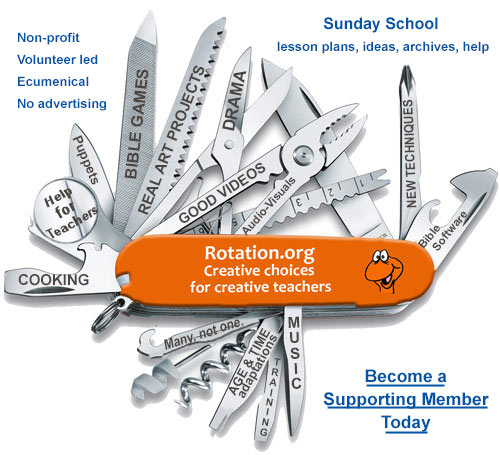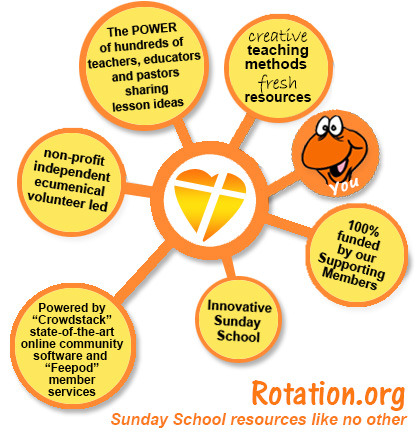Joseph
Art Workshop ~ Pillow Case
Summary of Lesson Activities:
The children will learn the story of Joseph. They will then decorate pillow cases to remind them that God is with them always, they are special to him, and His love helps them through all situations and circumstances. 1st through 3rd grade will decorate their pillow cases using special fabric pens; 4th through 5th grade will expand upon some of the story using Sharpie™ pens and alcohol.
Scripture Reference:
Genesis 37:1-36; 39:1-6b
Memory Verse:
Romans 8:28a “And we know that God causes everything to work together for the good of those who love God and are called according to his purpose for them.” (NLT)
Key Concepts and Life Application
The children will:
- Identify Genesis as the first book in the Old Testament; locating the story in Genesis.
- Retell the story in their own words – identifying story characters and their feelings.
- Explain how jealousy erupted in Joseph’s family. Learn how feelings can separate us from family and friends.
- Learn that each of us is a favorite in the eyes of God.
- Understand that God loves us and is never separated from us, no matter what happens.
Preparation and Supplies:
- Read the scripture ahead of time.
- View the videos at Steve Spangler Science: Making Science Fun, “Sharpie Pen Science,” https://stevespangler.com/expe...sharpie-pen-science/
- Gather the materials.
- Bibles – minimally one for every two children.
- Bible Story Strips, one set for every three children. Best to copy each set on different colored cardstock. Cut apart and mix up. Reuse each week
- Pillow case, one for each child
- Masking tape
1st, 2nd, and 3rd grade:
- Posterboard cut to fit pillow cases, one for each child, can be reused each week.
- Fabric markers
4th and 5th grade:
- Sharpie™ pens, red, orange, yellow, green, blue, purple
- Plastic cups, several per child, reusable
- Rubberbands big enough to go around mouth of cup
- Rubbing alcohol (70% from the drug store)
- Dropper bottles or medicine droppers
- Whiteboard marker and eraser
Advanced Preparation Requirements:
- Insert a piece of poster board into the pillow cases to prevent the pens from bleeding through. For 4th and 5th grade, they will remove the poster board after writing the verse on the pillow case.
Lesson
Opening
Greet the children and introduce yourself. Distribute Bibles to each child or every two children.
Say: We are learning about Joseph and his coat of many colors today and then will decorate a pillow case to remind them that God is with them always, they are special to him, and His love helps them through all situations and circumstances.
Open with a prayer.
Scripture and Story Reading:
Ask:
Where in the Bible would we find this story? (Old Testament, Genesis)
Have the students find the book of Genesis, chapter 37, verse 1, in their Bibles. Make sure it is noted that Genesis is the first book in the Old Testament.
Say:
I bet you already know something about this story. On these strips of paper are events in our story. Working in groups of three, see if you can put these strips or events, in the correct order.
Pass out sets of story sequence strips – one set for every 3 students.
Allow a few minutes for this exercise. It is ok if they peek in their Bibles!
Say:
Let’s check how you did with the story in the Bible.
Read them the story using the following paraphrase.
Story Paraphrase – Genesis 37:1-35 (PDF Version Attached)
Jacob (who was also called Israel) lived in the land of Canaan. Jacob had many sons (12 in all) but he liked Joseph the best. Because Jacob loved Joseph so much, Jacob made Joseph a coat with many beautiful colors. The coat made Joseph proud. He felt special! But it made his brothers…mad! They hated Joseph. They couldn’t speak one kind word to him.
One night Joseph had a dream. When he told his brothers about it, they hated him even more. “Listen to my dream,” said Joseph. “We were out in the field, tying our bundles of wheat together, when suddenly my bundle rose and stood upright. All of your bundles gathered around mine and bowed down to it.” His brothers said, “do you plan to be king over us?” They didn’t like what Joseph had to say.
Then Joseph had another dream. He told his brothers. “In this dream the sun and moon and eleven stars were bowing down to me.” Joseph's brothers were jealous of him, but his father kept wondering about the dream. What could it mean?
One day when Joseph's brothers had taken the sheep to a pasture near Shechem, Jacob asked Joseph to go check on them. So, Joseph went to find his brothers. His brothers saw him coming—it must have been because of the colorful coat. “Here comes that dreamer,” said his brothers. “Let’s kill him! Then we’ll see what comes of his dreams!” “No, don’t kill him,” Reuben said. “Let’s only throw him into a pit. There’s one over there.” Reuben was thinking that at night he would secretly rescue Joseph.
Joseph came up to his brothers. Before he could even say hello, they grabbed him. They took his multicolored coat and threw him into a pit. Then his brothers sat down to eat their dinner.
As they were eating Judah said, “Look, here come some men on their way to Egypt – Ishmaelite traders. Let’s sell Joseph, then we won’t have to kill him. After all, he is our brother.” So when the traders came by, his brothers pulled Joseph up out of the pit. They sold him for twenty pieces of silver.
Joseph's brothers killed a goat and dipped Joseph's fancy coat in its blood. They took the coat to their father and said, "We found this!” Jacob recognized it. “Joseph must have been killed by a wild animal!” Jacob mourned for Joseph a long time.
Paraphrased from CEV and NIrV Bibles.
Discussion:
Ask:
- Why did Jacob give Joseph a special coat? to show his love for Joseph
- What do you think Joseph’s brothers thought when Joseph received his special coat? Why didn’t I get one too? Dad likes Joseph best; jealous feelings.
Say:
When Jacob gave this special gift to Joseph got and no one else, it was like Jacob saying, “Joseph is special!”
Ask:
- Did Joseph act like he was a special person?
- How did that contribute to the feelings of rivalry in his family?
- Do you know anyone who brags about the things they own?
- How does this make you feel?
If we are angry or jealous of someone, does that make us feel close to that person, or separated from that person? Separated
Say:
Feelings of anger or jealousy separate us from family or friends. The good news is that God is never separated from us! God is always close to us. One way we can feel closer to God is through prayer.
Ask:
This might seem like an obvious question, but why is it important to pray when we’re feeling separated from family and friends? God already knows we need his help; prayer is a way we show our trust in God.
Ask for any prayer requests. Ask if anyone would like to lead the group in prayer. Be prepared to say a prayer yourself, working in prayer requests. A suggestion: “Dear God. Thank you for being with us in every situation. Help us not to get jealous or angry when others have things we don’t have. Help us remember your love is always with us. Amen.”
Say:
Joseph and his family didn’t deal with their problems, so they became even bigger problems.
Ask:
Are there ways to keep feelings like jealousy under control so it doesn’t cause trouble? talk to an adult about the hard feelings; tell a friend how you are feeling without getting angry; pray for God’s strength to get you through a hard time; read the Bible for reassurance of God’ love for us in all circumstances
Say:
God loves you. Let’s make a special colorful pillowcase. When you go to bed every night, you’ll be reminded that God’s love is with you everywhere you go, through all situations and circumstances.
1st, 2nd, and 3rd Grade: Decorating Pillowcases
Give each child a pillow case with a large piece of poster board in it. Put out lots of colors of markers.
Directions:
- Using the markers, decorate your pillow case to remind you that God and His love are with you wherever you go.
- Suggest that they put the memory verse on it; you might want to write it on the board so they can see it easily.
- At about 10:40, ask the children to help clean up the materials.
Wrap-up:
Your pillowcases can go home with you today. I hope you’ll enjoy using them.
Sometimes, when I go to bed, I think over the things that happened to me that day. I bet Joseph did that too. Sometimes, it’s so easy to go to sleep because it was a good day. But, on those days when some bad things happen, I sometimes start worrying.
God doesn’t want us to worry. He wants us to pray and give him our worries. He wants us to trust Him, just like Joseph did. So the next time you have trouble sleeping, think about your pillow case and give your worries to God.
4th and 5th Grade: Decorating Pillowcases
Give each child a pillow case and several plastic cups and rubber bands.
Directions:
- Write your name inside your pillowcase on the piece of tape.
- Optional: Write the verse on the outside of your pillow case as a reminder that God is always with you.
- Place the plastic cup inside the middle of the pillow case.
- Position the opening of the cup directly under the section of the pillowcase that you want to decorate.
- Stretch the rubber band over the pillowcase and the cup to secure the pillowcase in place.
- Repeat this with a few more cups.
- Place about 6 dots of ink from one marker in a circle pattern about the size of a quarter in the center of one of stretched out fabric circles.
- If you like, use another color marker to fill in spaces between the first dots. There should be a quarter size circle of dots in the middle of the plastic cup opening when you are finished.
- Don’t let the ink dry!
- Slowly squeeze approximately 20 drops of rubbing alcohol into the center of the circle of dots. DO NOT flood the design area with rubbing alcohol. The key is to drip the rubbing alcohol slowly in the center of the design and allow the molecules of ink to spread outward from the center. As the rubbing alcohol absorbs into the fabric, the ink spreads in a circular pattern. The result is a beautiful flower-like pattern. (Students often remark that the design looks like the colorful surface of a compact disc).
- Apply as much or as little rubbing alcohol as desired, but do not let the pattern spread beyond the edges of the cup. Allow the developed design to dry for 3 to 5 minutes before moving the cup on to a new area of the shirt.
- It is important to heat set the colors by placing the shirt in the dryer for approximately 15 minutes. Be sure to give students the “care instructions.”
- At about 10:40, ask the children to help clean up the materials. Since their pillowcases are wet, lay them out to dry. They can either pick them up after worship or get them next week.
How It Works:
This is really a lesson in the concepts of solubility, color mixing, and the movement of molecules. The Sharpie markers contain permanent ink, which will not wash away with water. Permanent ink is hydrophobic, meaning it is not soluble in water. However, the molecules of ink are soluble in another solvent called rubbing alcohol. This solvent carries the different colors of ink with it as it spreads in a circular pattern from the center of the shirt.

Comparison to Life:
This is similar to life. Along the way, good things happen to us. For example, Joseph was given the coat of many colors. But, bad things happen too. For Joseph, it was his brothers selling him as a slave.
When we have God with us, the bad things are easier to get through. Think about it, the Sharpie marker put dots of color on your pillow case. When you added the rubbing alcohol, the dark colors became lighter and brighter. If you got Sharpie on your skin, the rubbing alcohol will take it out. God is like the rubbing alcohol. He makes the dark times lighter and sometimes takes them away completely.
Filler Time (Use only if you need it)
If you have time, use the following to help the children learn the Bible verse. Write the memory verse on the white board and cover the verse on bulletin board. Give students about one minute to read it and try to memorize as much as they can. You might want to read it together a few times.
Then, have children close their eyes and erase a word or two. See who can say the verse with the missing words.
Continue until the whole Bible verse is erased. You may be surprised to see how many students can already say it from memory.
Reflection:
Prayer:
Suggestions for the closing prayer: ask children to reflect on what the Bible verse means to them.
Tidy and Dismissal:
Ask children to help tidy up. Close the door and turn off the lights. Store your materials back in the cabinet.
References
The “Overview,” “Paraphrase,” and “Discussion” portion of this lesson were obtained from:
- Hulbert, Carol. "Joseph’s Coat: Art Workshop." Nov. 2003. < Copyright 2003, 2010, First United Methodist Church, Ann Arbor, MI.
Information on using Sharpies™ and rubbing alcohol were obtained from:
Story Strips
Jacob (also called Israel) had lots of sons, but liked Joseph best.
Jacob gives Joseph a coat of many colors.
Joseph’s brothers are jealous of his beautiful coat.
Joseph has dreams about his brothers bowing down to him.
Joseph’s brothers took the flock to Shechem.
Joseph’s brothers plot to kill Joseph.
The brothers throw Joseph into an empty well.
Joseph’s brothers sell Joseph into slavery.
The brothers tell Jacob that a wild animal killed Joseph.
A lesson written by Ann Wright from: St. Andrews Presbyterian Church.
Raleigh, NC
A representative of Rotation.org reformatted this post to improve readability.

 Water
Water After helping to mix the cement, and place chicken wire in their tray, have a helper pour the concrete into each student's tray. Let the students smooth the top of the concrete. Don't let the concrete overflow the tray. If the top of the mixture in their tray is a little dry, sprinkle some water on it and smooth it.
After helping to mix the cement, and place chicken wire in their tray, have a helper pour the concrete into each student's tray. Let the students smooth the top of the concrete. Don't let the concrete overflow the tray. If the top of the mixture in their tray is a little dry, sprinkle some water on it and smooth it.



































